Research - (2021) Volume 9, Issue 2
A Survey about Awareness of Oral Cancer among the Undergraduate Dental Students
Anushya P, Dhanraj Ganapathy* and Keerthi Sasanka
*Correspondence: Dhanraj Ganapathy, Department of Prosthodontics, Saveetha Dental College and Hospitals, Saveetha Institute of Medical and Technical Sciences, Saveetha University Tamilnadu, India, Email:
Abstract
Dentists have a crucial role within the best prevention measures, controlling etiological factors and early detection. Lack of general dentist carcinoma knowledge has been shown to be a serious factor to delays in referral and treatment. Dentists’ competence and confidence in detecting carcinoma could also be strongly influenced by their school of dentistry training. Hence, it's the responsibility of the school of dentistry to make sure the formation of a generalist with solid technical, scientific, ethical knowledge, promoting good oral hygiene and prevention of oral diseases. Therefore, the aim of this study was to assess dental student’s awareness, role in preventing and early detection of oral cancer. The questionnaires were designed to support the knowledge, attitudes and perception of dental students toward carcinoma. The questionnaire was distributed through an online google form. The study population included 100 dental students. The questions were carefully studied and thus the corresponding answers were marked by the participants. The data was collected and statistically analysed. In this present study, 48% male and 52% female participated. Here, 76% of scholars are conscious of carcinoma whereas 24% of scholars are unaware of oral cancer. The risk factors for carcinoma mainly described by the scholars were 44% for smoking and 8% for alcohol consumption. Most of the scholars considered that labial/ buccal mucosa was the commonest site in diagnosis of oral cancer. The early detection of carcinoma improves survival, which was suggested by 46% of scholars. About 59% of scholars reported that they need sufficient knowledge regarding prevention and management of carcinoma. Majority of scholars preferred Continuous education lectures for gaining knowledge regarding prevention and detection of carcinoma. In this present study, out of 100 Dental students who participated in awareness of carcinoma, majority of the dental students were aware and have better knowledge on preventive measures of oral cancer. This study also highlights the necessity for an improvement of the teaching program regarding oral examination.
Keywords
Oral cancer, Early diagnosis, Etiological factors, Knowledge, Attitude, Practice, Dental students
Introduction
Recently the incidence of oral cancer is increasing to an alarming level, especially in developing countries. Squamous cell carcinoma (SCC) makes about 95% of oral cancers [1]. Tobacco consumption, unhealthy diet, physical inactivity, and infections are the foremost common causes of cancer. The risk factor for development of carcinoma increases when tobacco is employed in combination with alcohol or betel nut [2]. Oral cancer affects the anterior tongue, cheek, floor of mouth, gingiva or the other a part of the mouth. The commonest risk factors liable for carcinoma are chemical factors like tobacco and alcohol, oro-dental factors, biological factors like Human papillomavirus (HPV), syphilis, dietary deficiencies, chronic candidiasis and viruses [3,4]. Carcinoma occurs more often in males, and was prevalent in people from the lower socioeconomic scale and in ethnic group groups, although rates in females are on the increase [5]. Early detection of oral potentially malignant disorders (OPMDS) and oral cancers is extremely important in achieving an honest prognosis and as a result reducing the morbidity and mortality rates [6,7]. Dentists have a prominent role within the prevention and early diagnosis of carcinoma because they could be the primary clinicians to encounter a patient with oral cancer. Therefore, they're ready to perform screening for oral cancers, advice interventions and recommend avoiding risky habits and behaviours. Delays within the diagnosis of oral cancers are reported to be related to both healthcare professionals and patients [8,9]. However, the awareness among academics & professionals is additionally decreasing due to the shortage of proper knowledge about some risk factors, oral lesions that result in oral carcinoma and prevention of carcinoma. Multimedia, videos, podcasts, wikis, social network programs like “Facebook”, are all now available on computers and mobiles, and they will collectively play a huge role in increasing awareness with regards to the importance of early detection & prevention of cancer [10]. Dental professionals should have sufficient awareness and knowledge of carcinoma and its associated risk factors and appropriate clinical skills to properly perform a scientific carcinoma examination. In previous studies, there's a scarcity of carcinoma awareness amongst doctors and dentists, particularly among medical and dental students. Only 39.0% of dental surgeons and 9.0% of physicians knew the way to identify the foremost common sites during which carcinoma develops. Interestingly, only a couple of them prepared to perform the biopsy procedure [11]. Among the university students, 71% and 61.5% of scholars reported that ulcer or oral bleeding and swelling are signs and symptoms of carcinoma [12]. While, among postgraduate students 96% of scholars were aware that habits were the most risk factor for many of the carcinoma whereas 50% of students were conscious of carcinoma and 67% of them were confident about the correct treatment protocol [4]. Studies performed on medical and dental students, dentists, dental hygienists, physicians, and nurse practitioners have shown their lack of carcinoma awareness and inability to perform standardized preventive measures and diagnostic procedures [13]. Dentists are professionally liable for determining whether patients are in danger of developing carcinoma, also as for providing a comprehensive carcinoma examination for his or her patients. Therefore assessing Dentist knowledge, opinions and practices toward carcinoma is vital. In previous literature, there's no better knowledge and practices about oral cancer among undergraduate Dental students. Previously our department has published extensive research on various aspects of prosthetic dentistry [14-28] was done in our institute and inspired to do a cross sectional study on awareness of oral cancer among undergraduate Dental students. The aim of this study is to examine the dental student’s awareness, knowledge of prevention and early detection of oral cancer.
Materials and Methodology
Self-administered structured questionnaires comprising 17 questions covering socio demographic information, knowledge, attitude and perception was framed. The questionnaire comprised a few open-ended questions and mix of multiple choices. The questionnaire was distributed through Google forms and the study population included 100 undergraduate dental students. The participants were selected randomly by using a simple random sampling method. Students took 5min to complete the survey. In this study, the pros include economical, easy to create, gather larger data, quick interpretation and wide reach whereas Cons includes response, survey fatigue, and homogeneous population. This study obtained approval from the scientific review board, Saveetha Dental College and hospitals in Chennai. The measures taken to minimize the sampling bias is based on internal and external validity, minimize error in questions and avoid leading questions. The internal validity is based on awareness, knowledge and preventive measures of oral cancer whereas the external validity is based on awareness, results and outcomes of the study. In this study, the output variables are demographic information, social media, Oral cancer, etiological factors, signs and symptoms, early detection and prevention of oral cancer. Each output variable was collected as ordinal data and the collected data were represented as a bar graph. The Statistical Package for the Social Sciences (SPSS) was used to enter and analyses the data.
Results and Discussion
Out of total 17 questionnaires that were distributed, the response rate of the study was 100%. There were 48% male and 52% females who participated in this study (Figure 1). There were 25% of students in 1st year, 23% of students in 2nd year, 18% of students in 3rd year, 15% of students in 4th year and 19% of students in an internship (Figure 2). Among the participants, 76% of students were aware of Oral cancer (Figure 3). The labial/buccal mucosa was the structure which is most ordinarily examined during diagnosis of oral cancer, this answer was supported by 41% of students (Figure 4). The oral cancer was diagnosed more frequently at the age group of 45-59 years, which was supported by 45% of students (Figure 5). 48% of students responded smoking tobacco and alcohol consumption would be the etiological factor for oral cancer (Figure 6). 42% of students reported that labial/ buccal mucosa was the foremost common site for oral cancer (Figure 7). 53% of students reported that oral cancer is asymptomatic in early stage; 9% of students responded that Oral cancer shows any mild symptoms in early stage and 38% of students reported in a moderate way whether it is an symptomatic or asymptomatic in early stage (Figure 8). 31% of students responded that white or red patches within the mouth could be the sign of oral cancer (Figure 9). Oral cancer is usually diagnosed in advanced stage, which was supported by 83% of students whereas 17% of students reported that Oral cancer isn’t mostly diagnosed in advanced stage (Figure 10). 80% of students declared that erythroplakia and leukoplakia are the foremost common lesions associated with Oral cancer. While, 20% of students weren’t accepted (Figure 11). 46% of students suggested that early detection of oral cancer improves survival; 9% of students reported that early detection of cancer isn’t possible to increase the survival rates and 45% of students reported in a moderate way that early detection may or may not be possible to extend survivability (Figure 12). 18% of students reported that the Clinical exam would be the early detection of oral cancer; 12% of students reported to Biopsy; 33% of students reported to Regular dental checkup and 37% of students reported to Patient education (Figure 13). 26% of students reported that Good oral hygiene would prevent oral cancer; 16% of students reported Quitting Tobacco; 29% of students reported Regular checkup to dental clinics; 2% of students reported Quitting alcohol consumption and 27% of students reported that maintaining good oral hygiene, quitting tobacco and alcohol consumption, regular checkups to clinics would prevent oral cancer (Figure 14). 2% of students referred their patient to Plastic surgery specialist while suspecting them with oral malignancy; 7% of students referred to an Oral and maxillofacial surgeon; 19% of students referred to an Oral medicine specialist and 59% of students referred to an Oncology specialist (Figure 15). 59% of students reported that they have sufficient knowledge concerning prevention and management of oral cancer whereas 41% of students are lacking in knowledge (Figure 16). 31% of students preferred information packages for gaining knowledge regarding detection and prevention of oral cancer; 36% of students preferred Continuous education lectures; 16% of students preferred Seminars; 15% of students preferred Webinars and a couple of students preferred Participation in Organized research (Figures 17-20).
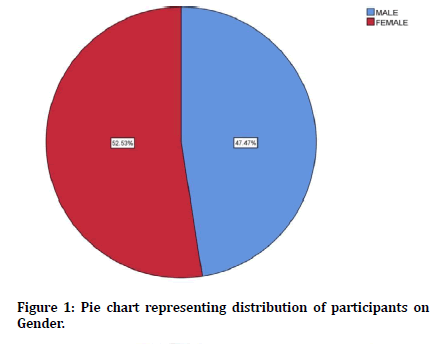
Figure 1. Pie chart representing distribution of participants on Gender.
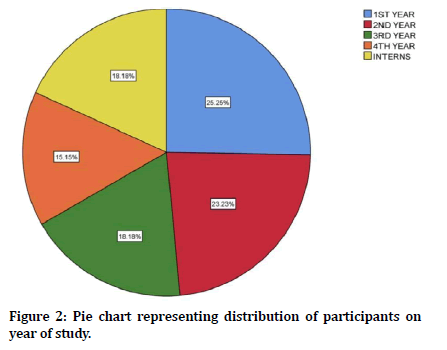
Figure 2. Pie chart representing distribution of participants on year of study.
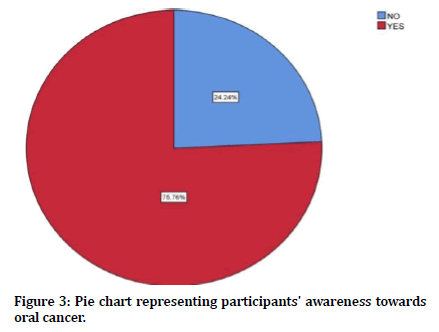
Figure 3. Pie chart representing participants' awareness towards oral cancer.
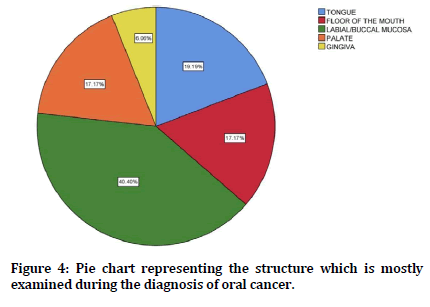
Figure 4. Pie chart representing the structure which is mostly examined during the diagnosis of oral cancer.
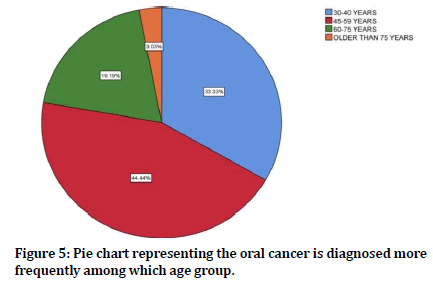
Figure 5. Pie chart representing the oral cancer is diagnosed more frequently among which age group.
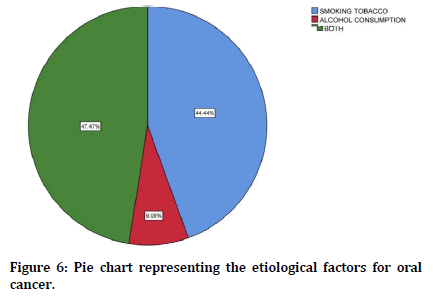
Figure 6. Pie chart representing the etiological factors for oral cancer.
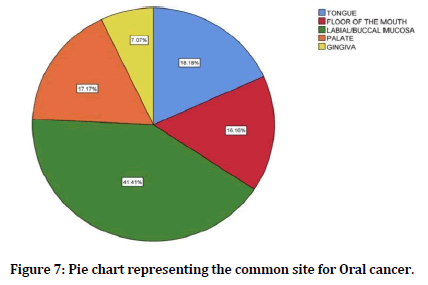
Figure 7. Pie chart representing the common site for Oral cancer.
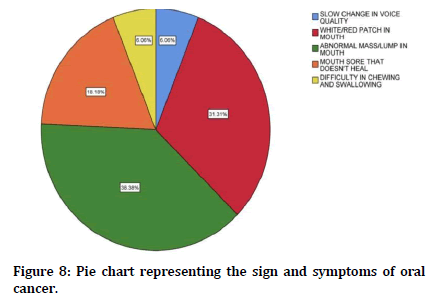
Figure 8. Pie chart representing the sign and symptoms of oral cancer.
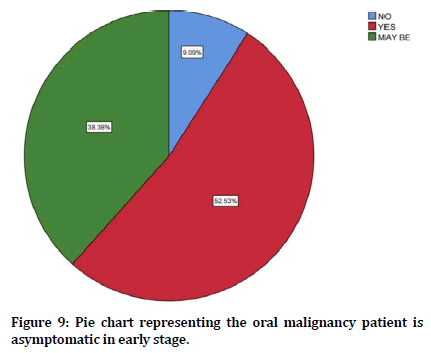
Figure 9. Pie chart representing the oral malignancy patient is asymptomatic in early stage.
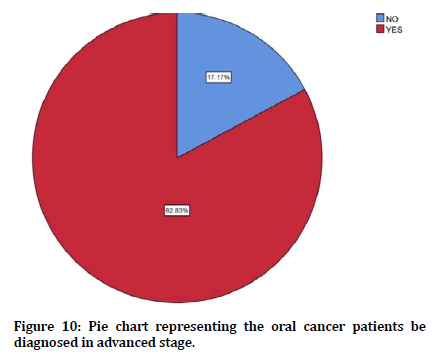
Figure 10. Pie chart representing the oral cancer patients be diagnosed in advanced stage.
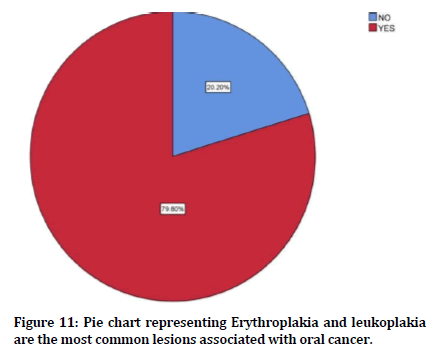
Figure 11. Pie chart representing Erythroplakia and leukoplakia are the most common lesions associated with oral cancer.
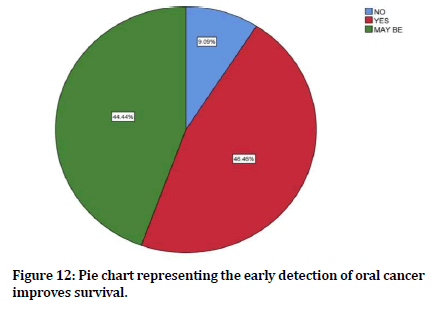
Figure 12. Pie chart representing the early detection of oral cancer improves survival.
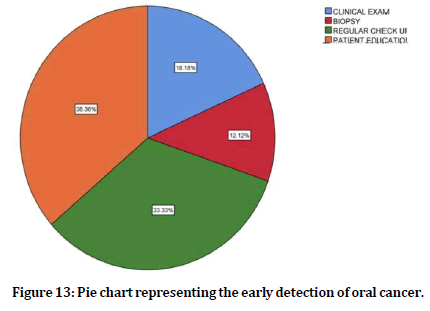
Figure 13. Pie chart representing the early detection of oral cancer.
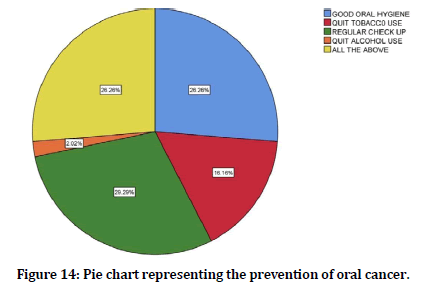
Figure 14. Pie chart representing the prevention of oral cancer.
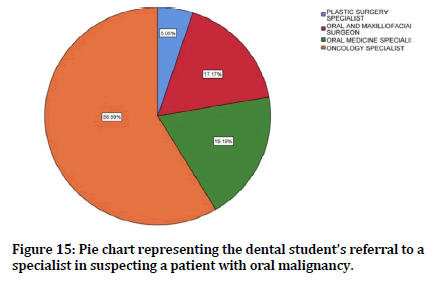
Figure 15. Pie chart representing the dental student’s referral to a specialist in suspecting a patient with oral malignancy.
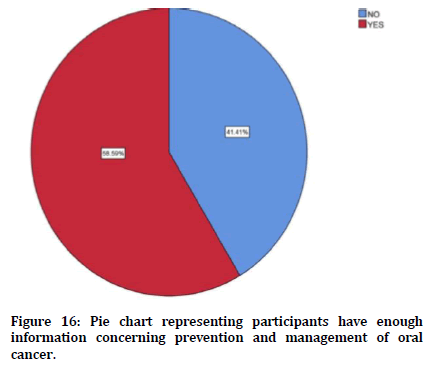
Figure 16. Pie chart representing participants have enough information concerning prevention and management of oral cancer.
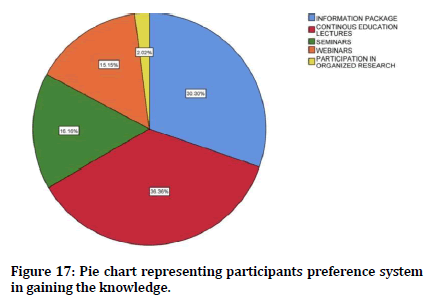
Figure 17. Pie chart representing participants preference system in gaining the knowledge.
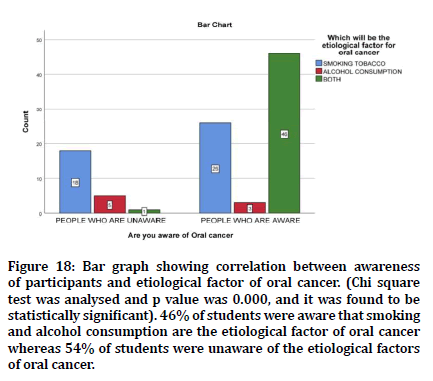
Figure 18. Bar graph showing correlation between awareness of participants and etiological factor of oral cancer. (Chi square test was analysed and p value was 0.000, and it was found to be statistically significant). 46% of students were aware that smoking and alcohol consumption are the etiological factor of oral cancer whereas 54% of students were unaware of the etiological factors of oral cancer.
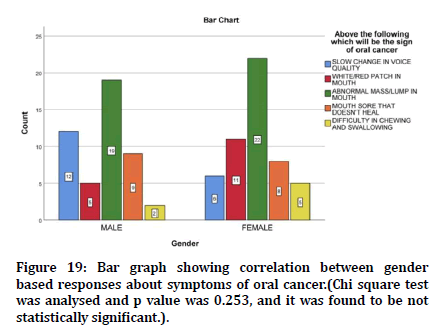
Figure 19. Bar graph showing correlation between gender based responses about symptoms of oral cancer.(Chi square test was analysed and p value was 0.253, and it was found to be not statistically significant.).
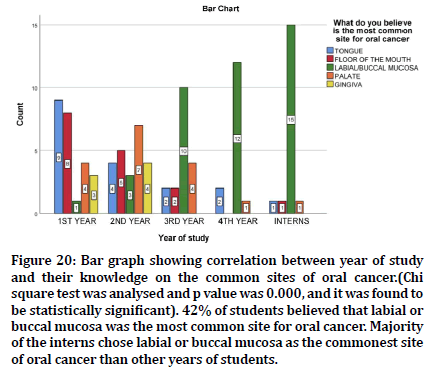
Figure 20. Bar graph showing correlation between year of study and their knowledge on the common sites of oral cancer.(Chi square test was analysed and p value was 0.000, and it was found to be statistically significant). 42% of students believed that labial or buccal mucosa was the most common site for oral cancer. Majority of the interns chose labial or buccal mucosa as the commonest site of oral cancer than other years of students.
Dentists need to possess a radical knowledge of risk factors, clinical signs and symptoms. Early diagnosis and rapid access for treatment of cancer is a crucial factor for improving outcomes for oral cancer. In this present study, females were more than male participants. Similarly, there is a large female participation [1]. Tobacco use is the main risk factor of oral cancer. Clovis et al. 90% of dental professionals considered tobacco as the main risk factor for Oral cancer [29]. Similarly, [1] smoking and alcohol consumption were correctly mentioned by 92.4% and 84.21% of the students whereas in this study 44% of students considered smoking tobacco is the main risk factor for Oral cancer. Decuseara et al. 56% of dental practitioners identified older age as a possible risk factor for development of oral cancer [30] whereas in this study, 45% of students considered 45-57 years have the high risk factor for developing oral cancer. Warnakulasuriya et al. 84% of the dental practitioners examine oral mucosa for diagnosing Oral cancer [31] whereas in this study, 41% of dental students diagnose Labial/ buccal mucosa for examining oral cancer. Alfadhel et al. 46.6% of students believed that the most oral cancer could not be diagnosed in early stage whereas in this study, 83% of students believed that oral cancer is usually diagnosed in advanced stage [32]. Similar to our findings, Joseph et al. 75% of dentists considered Oral cancer diagnosed in an advanced stage. In a similar study, 90.7% of dentists believed that early detection of oral cancer improves survival whereas in this study 46% of students declared that early detection of oral cancer increases survival rates [33]. Human papillomavirus vaccination showed promising results in oral cancer prevention [34,35]. Oral cancer screening programs found to be a cost-effective measure in raising the awareness and reducing mortality [36]. Thus, the dental students should be prepared to play a part in public health awareness regarding the explanation of the potential burden of sexually transmitted viruses as HPV, in its act in oral cancer and influence of vaccination. Most of the students preferred Oral medicine specialists when they suspect a patient with oral malignancy [37] whereas in this study most of the students preferred Oncology specialists. Similar to these study findings, Ahmed et al. reported that most of the participants referred their patient to an oral medicine specialist, while remaining of the participants was attributed to oral and maxillofacial surgeon, general surgeon and dentists. This finding could indicate the presence of confusion among general dentists of the referral system of these diseases [38]. Clovis et al. 46% of the dental practitioners considered that their knowledge regarding Oral cancer was insufficient [29]. While in this study, 41% of dental students considered their knowledge regarding Oral cancer was insufficient. Alfadhel et al. 34.7% students had sufficient knowledge concerning the prevention and detection of Oral cancer [32] whereas in this study 59% of students had sufficient knowledge regarding the preventive measures as well as detection of Oral cancer. Awan et al. 61.1% of students preferred seminars to gain information regarding prevention and detection of oral cancer [39] whereas in our study, most of the students preferred continuous education lectures for gaining current and adequate knowledge about oral cancer. We acknowledge that this study has some limitations, such as being based on self-applied questionnaires, using students' own perceptions and the limited number of populations. In further studies, awareness on oral cancer can be done among dental and medical professionals. The Knowledge of oral cancer among dentists as well as medical professionals is utmost important.
Conclusion
This study demonstrates that most of the dental students are aware and had a fair knowledge about the various aspects of oral cancer. This study revealed quite a satisfactory level of awareness concerning oral cancer among the undergraduate dental students and also entailed the necessity to enhance dental students' knowledge about early detection of oral cancer through upgraded theoretical and practical knowledge.
Acknowledgement
This research was done under the supervision of the department of research of Saveetha Dental College and Hospitals. We sincerely show gratitude to the corresponding guides who provided insight and expertise that greatly assisted the research.
Conflict of Interest
The author has none to declare.
References
- Soares TR, Carvalho ME, Pinto LS, et al. Oral cancer knowledge and awareness among dental students. Br J Oral Sci 2014; 13:28-33.
- Gopal KS, Duraiselvi P. Awareness and knowledge of oral cancer among dental patients: A survey based questionnaire study. Alcohol 2014; 131:26.
- Ram H, Sarkar J, Kumar H, et al. Oral cancer: Risk factors and molecular pathogenesis. J Maxillofac Oral Surg 2011; 10:132-137.
- Ramaswamy P, Uday G, Sreenivasulu P, et al. Awareness about oral cancer among dental postgraduate students in the state of Andhra Pradesh, India. J Cancer Educ 2014; 29:665-668.
- Scully C, Felix DH. Oral medicine—Update for the dental practitioner orofacial pain. Br Dent J 2006; 200:75-83.
- Speight PM, Farthing PM, Bouquot JE. The pathology of oral cancer and precancer. Current Diagnostic Pathol 1996; 3:165-176.
- Johnson NW, Jayasekara P, Amarasinghe AH. Squamous cell carcinoma and precursor lesions of the oral cavity: Epidemiology and aetiology. Periodontology 2011; 57:19-37.
- Pitiphat W, Diehl SR, Laskaris G, et al. Factors associated with delay in the diagnosis of oral cancer. J Dent Res 2002; 81:192-197.
- McGurk M, Chan C, Jones J, et al. Delay in diagnosis and its effect on outcome in head and neck cancer. Br J Oral Maxillofac Surg 2005; 43:281-284.
- Elgazzar R. Assessment of oral cancer awareness among dental students, practitioners and patients in Manitoba, Canada. Global J Otolaryngol 2018; 17:555961.
- Silva SR, Juliano Y, Novo NF, et al. Comparative study of knowledge about oral cancer among undergraduate dental students. Einstein 2016; 14:338-345.
- Dubai SA, Ganasegeran K, Alabsi AM, et al. Awareness and knowledge of oral cancer among university students in Malaysia. Asian Pacific J Cancer Prevention 2012; 13:165-168.
- Burzynski NJ, Rankin KV, Silverman S, et al. Graduating dental students' perceptions of oral cancer education: Results of an exit survey of seven dental schools. J Cancer Edu 2002; 17:83-84.
- Jain AR, Nallaswamy D, Ariga P, et al. Determination of correlation of width of maxillary anterior teeth using extraoral and intraoral factors in Indian population: A systematic review. World J Dent 2018; 9:68-75.
- Jyothi S, Robin PK, Ganapathy D. Periodontal health status of three different groups wearing temporary partial denture. Res J Pharmacy Technol 2017; 10:4339-43342.
- Duraisamy R, Krishnan CS, Ramasubramanian H, et al. Compatibility of nonoriginal abutments with implants: Evaluation of microgap at the implant–abutment interface, with original and nonoriginal abutments. Implant Dent 2019; 28:289-295.
- Selvan SR, Ganapathy D. Efficacy of fifth generation cephalosporins against methicillin-resistant Staphylococcus aureus-A review. Res J Pharmacy Technol 2016; 9:1815-1818.
- Ganapathy D, Sathyamoorthy A, Ranganathan H, et al. Effect of resin bonded luting agents influencing marginal discrepancy in all ceramic complete veneer crowns. J Clin Diagnostic Res 2016; 10:ZC67.
- Subasree S, Murthykumar K. Effect of aloe vera in oral health-A review. Res J Pharm Technol 2016; 9:609.
- Ranganathan H, Ganapathy DM, Jain AR. Cervical and incisal marginal discrepancy in ceramic laminate veneering materials: A SEM analysis. Contemporary Clin Dent 2017; 8:272-278.
- Vijayalakshmi B, Ganapathy D. Medical management of cellulitis. Research J Pharm Technol 2016; 9:2067-2070.
- Ganapathy DM, Kannan A, Venugopalan S. Effect of coated surfaces influencing screw loosening in implants: A systematic review and meta-analysis. World J Dent 2017; 8:496-502.
- Ashok V, Suvitha S. Awareness of all ceramic restoration in rural population. Res J Pharm Technol 2016; 9:1691-1693.
- Ashok V, Nallaswamy D, Begum SB, et al. Lip bumper prosthesis for an acromegaly patient: A clinical report. J Indian Prosthodont Society 2014; 14:279-282.
- Venugopalan S, Ariga P, Aggarwal P, et al. Case report: Magnetically retained silicone facial prosthesis. Nigerian J Clin Practice 2014; 17:260-264.
- Kannan A, Venugopalan S. A systematic review on the effect of use of impregnated retraction cords on gingiva. Res J Pharm Technol 2018; 11:2121-2126.
- Basha FY, Ganapathy D, Venugopalan S. Oral hygiene status among pregnant women. Res J Pharm Technol 2018; 11:3099-3102.
- Ajay R, Suma K, Ali SA, et al. Effect of surface modifications on the retention of cement-retained implant crowns under fatigue loads: An In vitro study. J Pharm Bioallied Sci 2017; 9:S154.
- Clovis JB, Horowitz AM, Poel DH. Oral and pharyngeal cancer: knowledge and opinions of dentists in British Columbia and Nova Scotia. J Canadian Dent Assoc 2002; 68:415-420.
- Decuseara G, MacCarthy D, Menezes G. Oral cancer: Knowledge, practices and opinions of dentists in Ireland. J Irish Dent Assoc 2011; 57.
- Warnakulasuriya KA, Johnson NW. Dentists and oral cancer prevention in the UK: opinions, attitudes and practices to screening for mucosal lesions and to counselling patients on tobacco and alcohol use: Baseline data from 1991. Oral Diseases 1999; 5:10-14.
- Assiri ZA, Alshehri AA, Alfadhel AK. Oral cancer awareness, knowledge, and practices among Saudi general dentists. Saudi J Oral Sci 2019; 6:25.
- Joseph BK, Sundaram DB, Sharma P. Oral cancer awareness among dentists in Kuwait. Medical Principles and Practice. 2012;21(2):164-70.
- Chainani Wu N, Epstein J, Touger-Decker R. Diet and prevention of oral cancer. J Am Dent Assoc 2011; 166–169.
- Daley E, Dodd V, DeBate R, et al. Prevention of HPV-related oral cancer: Assessing dentists readiness. Public Health 2014; 128:231-238.
- Petti S, Scully C. Oral cancer knowledge and awareness: primary and secondary effects of an information leaflet. Oral Oncol 2007; 43:408–415.
- Arnout EA. Awareness of undergraduate dental students at taibah university toward early detection of oral cancer. J Dent Health Oral Disorders Therapy 2016.
- Ahmed NHM, Naidoo S. Oral cancer knowledge, attitudes, and practices among dentists in Khartoum state, Sudan. J Cancer Educ 2019; 34:291–296.
- Awan KH, Khang TW, Yee TK, et al. Assessing oral cancer knowledge and awareness among Malaysian dental and medical students. J Cancer Res Therapeut 2014; 10:903-907.
Author Info
Anushya P, Dhanraj Ganapathy* and Keerthi Sasanka
Department of Prosthodontics, Saveetha Dental College and Hospitals, Saveetha Institute of Medical and Technical Sciences, Saveetha University Tamilnadu, Chennai, IndiaCitation: Anushya P, Dhanraj Ganapathy, Keerthi Sasanka, A Survey about Awareness of Oral Cancer among the Undergraduate Dental Students, J Res Med Dent Sci, 2021, 9 (2): 124-131.
Received: 23-Sep-2020 Accepted: 29-Jan-2021
